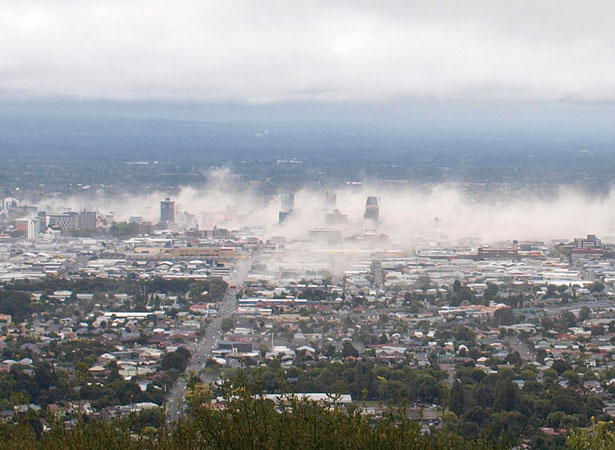
At 12.51 p.m. on Tuesday 22 February 2011, a magnitude 6.3 earthquake caused severe damage in Christchurch and Lyttelton, killing 185 people and injuring several thousand.
The earthquake’s epicentre was near Lyttelton, just 10 km south-east of Christchurch’s central business district. It occurred nearly six months after the 4 September 2010 earthquake.
The earthquake struck at lunchtime, when many people were on the city streets. More than 130 people lost their lives in the collapse of the Canterbury Television and Pyne Gould Corporation buildings. Falling bricks and masonry killed another 11 people, while eight died in two buses that were crushed by crumbling walls. Rock cliffs collapsed in the Sumner and Redcliffs area, and boulders tumbled down the Port Hills, with five people killed by falling rocks.
Although not as powerful as the magnitude 7.1 earthquake on 4 September 2010, this earthquake occurred on a shallow fault line close to the city, so the shaking was particularly destructive.
The earthquake brought down many buildings that had been damaged in September, especially older brick and mortar buildings. Heritage buildings that suffered heavy damage included the Provincial Council Chambers, Lyttelton’s Timeball Station, the Anglican Christchurch Cathedral and the Catholic Cathedral of the Blessed Sacrament. Two-thirds of the buildings in the central business district were subsequently demolished, including the city’s tallest building, the Hotel Grand Chancellor.
Liquefaction was much more extensive than in September 2010. Shaking turned water-saturated layers of sand and silt beneath the surface into sludge that squirted upwards through cracks. Thick layers of silt covered properties and streets, and water and sewage from broken pipes flooded streets. House foundations cracked and buckled, wrecking many homes. Irreparable damage necessitated the demolition of several thousand homes, and large tracts of suburban land were subsequently abandoned, with 8,000 properties bought by the government and razed.
The government declared a state of national emergency the day after the quake. Authorities quickly cordoned off Christchurch’s central business district. The cordon remained in place in some areas until June 2013. Power companies restored electricity to 75% of the city within three days, but re-establishing water supplies and sewerage systems took much longer.
The Oi Manawa Canterbury Earthquake National Memorial was opened on 22 February 2017, the sixth anniversary of the earthquake.
Read more on NZHistory
Christchurch earthquake images – New Zealand disasters timelineUses for shipping containers in Christchurch – February 2011 Christchurch earthquakeNew Zealand disasters timeline – New Zealand disasters timelineRNZAF flight after Christchurch earthquake – New Zealand disasters timelineRNZAF timeline – Royal New Zealand Air Force22 February 2011 earthquake interment site – Canterbury memorialsFebruary 2011 Christchurch earthquake – February 2011 Christchurch earthquakeCanterbury Earthquake National Memorial – February 2011 Christchurch earthquake
External links
How to cite this page
'Christchurch earthquake kills 185', URL: https://nzhistory.govt.nz/page/christchurch-earthquake-kills-185, (Ministry for Culture and Heritage), updated 16-Feb-2023

Community contributions